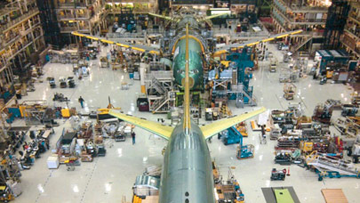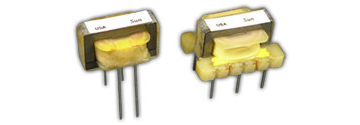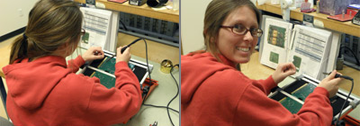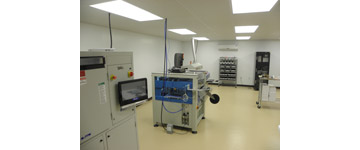The Benefit of Experience
In the 28 years since STC was formed, we have supplied custom components to high-reliabilitiy commercial, military, and aerospace programs. To get to the point where a company can effectively supply components for these types of projects, there are a number of key steps that must be taken first.
One of the first steps is to implement and certify an ISO quality program, which STC has done continuously since 1999. In addition to the ISO quality system, there are other certifications that benefit both the supplier and purchasing customer (for example, IPC-A-610 and J-STD-001 certification, which address the soldering and acceptability of electronic components).
According to STC VP of Operations Angie Calkin, much of the work beyond ISO certification is dictated by the projects themselves.
“You have to be willing to work with whatever requirements that are specified by the customer,” says Calkin. “Whether it be following first-article requirements or being proactive in reporting delivery dates, if you’re not willing to follow the requirements, you’re not going to make it as a supplier for these projects.”
As Calkin describes it, experience in working on these types of projects is invaluable.
“A lot of it is also building a reputation over the years. During the past five years, we’ve rarely been late on a delivery. At the same time, customers often ask us to push a date sooner, and we work with them as much as possible to do that.”
Calkin is able to describe, in detail, the requirements often specified by these types of projects, as well as the online supplier sites used to report accounting, manufacturing, engineering, and quality data. This focus on detail is shared by the entire STC staff.
As an example, an STC customer recently wrote:
“When I deal with STC, I always feel that your company values our business relationship, and that you dedicate the time and energy to get things right. I always feel confident that when you communicate concerns, they are intelligent questions—asking about genuine issues that may affect acceptance… Your attention to detail simply displays to me that you care about doing things right, and by the book, and that you really care about delighting your customers. This is so refreshing. Thanks for all you do, and for your exceptional attention to detail.”
On behalf of the entire STC staff, thank you. We’re doing our best.
Three “Underrated” Reasons to Order from STC
While our quality, manufacturing capabilities, pricing, and testing are prime reasons our customers continue to turn to STC, there are significant, but less obvious, reasons to considering STC for your upcoming projects. Here they are in reverse order:
3. Near the US Population Center: Our location in Illinois puts us in a fine spot when it comes to both shipping times and costs—particularly for heavy parts like iron-core transformers. Our shipments are securely packaged and are sent according to customer preferences, which may include ground, freight, or express (depending on shipment size).
2. We Still Answer the Phone / Respond to Online Inquiries: A large number of transformer and electronics suppliers have moved overseas. Of those still based in the US, many import a large portion of their product catalog from overseas. As has been the case since 1986, all of our transformers are made in the USA, and we have the expertise to answer any questions you may have. Do you need to know something specific about your project? Your design engineer is only a phone call (or email) away.
1. Involvement from Initial Design to End Product: This is where it really gets fun. We enjoy being involved in new projects right from the start—and we have the expertise to offer meaningful contributions very early in the process. Whether the need is for aircraft lighting transformers or printed circuit assemblies for a cutting-edge Kickstarter campaign, we have the capability to help at day one.
Contact us to learn more about how we can help you.

STC to be Supplier for New Boeing Tanker
STC, Inc. has been selected as a component supplier for Boeing’s new 767-2C tanker, which is currently in production and will be adapted into a KC-46 aerial refueling tanker for the U.S. Air Force.
STC has been suppying electronic components for avionics since it’s beginning as a company in 1986. The components manufactured by STC include transformers used in auto-flight systems, flight-instrument systems, and both exterior and interior lighting systems.
This most recent project is for the manufacture of transformers supplying power for exterior lights used to illuminate refueling areas. This project is a point of pride for STC, Inc. employees, on a number of levels.
The timely delivery of high-quality parts helps support the men and women of our armed forces who will be utilizing the installed equipment in the field. STC’s ability to serve as a supplier requires a high level of commitment to our own quality program, as well as to the quality requirements of our customers.
Additionally, STC’s involvement demonstrates our position as a company, having implemented demanding quality standards early on, and then methodically broadening those standards with an eye toward continual improvement.

STC Employees Complete Standards Training
In mid-December, STC hosted two separate training classes for company production personnel. A total of 17 employees attended one of the two training classes—and received certification for their respective class.
Ten employees attended the J-STD-001 classes, which trains production staff on soldering practices and processes as covered by the J-STD-001 requirements.
Seven employees attended the IPC-A-610 classes, which instructs supervisory staff on the soldering inspection standards covered by the IPC-A-610 requirements.
These certifications further help STC serve as a qualified vendor for high-reliability applications. Please contact us for more information about our capabilities as an Electronics Manufacuring Service (EMS) provider.

Application Profile – Medical Equipment
STC has provided electronic components for medical equipment used in the healthcare industry since its inception as a company in 1986. Since that time, we have expanded our product portfolio to include components for a increasingly diverse range of medical devices—from medical imaging equipment to medical beds to devices such as Peripheral Nerve Stimulators (PNS).
The PNS is used along with the delivery of anesthetic agents and is considered essential in measuring the patient’s neuromuscular state, thus allowing the administrator to appropriately administer the dosage of the relaxant being delivered. The clinical signs of neuromuscular recovery, such as the ability to lift the head, sustain a hand squeeze, and open the eyes cannot be elicited during the course of anesthesia alone. However, with the aid of a PNS, the patient’s neuromuscular state can be more easily evaluated by the stimulation of the nerve.[1]
Typically, the stimulator is superficially placed near the ulnar nerve, facial nerve, or the posterior tibial nerve. When the nerve is stimulated, the intensity of patient response, shown by the twitch of the thumb, indicates the degree of neuromuscular relaxation. Maintaining the proper degree of relaxation helps minimizes the risks in the postoperative period and maintains patient safety.
Through the years, the PNS has undergone several refinements which have led to new types of nerve stimulation such as cranial nerve stimulation and spinal nerve root stimulation.[2] Studies indicate that neuropathic pain responds well to nerve stimulation. The PNS works well in relatively new remedies for neuromodulation such as migraines, headaches, and even fibromylgia.[3]
The PNS has been successfully applied in clinical situations for chronic pain in extremities, neck, lower back, chest, abdominal wall, head, and face regions.[4]
Transformers used in PNS unitsWith electronic components, like those for the PNS, there are numerous factors to consider: stimulus frequency, electrode type, position and polarization, stimulus intensity, duration and waveform.
In the design of these electronic components, all of the above factors are addressed by our lead technical staff, the design process begins, and the components are made to customer specification.
All STC products are made in the USA at our ISO 9001:2008 registered plant in McLeansboro, IL. As with all components produced by STC, components made for medical equipment follow our rigid quality-control system and are 100-percent tested to ensure they meet both customer specifications and our own quality standards.
- Hudes Elliot MD and Lee, Kwok C. M ENG MD PH D. “Clinical Use of Peripheral Nerve Stimulators in Anaesthesia.” Canadian Journal of Anaesthesia September 1987: p. 525
- Stuart, RM and Winfree, CJ. “Neurostimulation Techniques for Painful Peripheral Nerve Disorders.” Department of Neurological Surgery – Columbia University Medical Center, New York 2009. PMID: 19064184 2009. Print.
- Slavin, KV. ” Peripheral Nerve Stimulation for Neuropathic Pain.” Department of Neurosurgery – University of Illinois at Chicago, 2008. PMID: 18164488. Print.
- Rasskazoff, SY and Slavin, KV. “An Update on Peripheral Nerve Stimulation.” Department of Neurosurgery – University of Illinois at Chicago, 2012. PMID: 23111288. Print

STC Employee Profile
It’s not just ISO certifications and customer-satisfaction metrics that tell the story of STC. Looking beyond those measurements, it’s the employees of STC that enable us to continue fulfilling customer expectations. This month, we are presenting a profile of one such employee, STC’s Courtney Webb.
Courtney first started working at STC in 2004, only to move to North Carolina nine months later. After two years in North Carolina, and the birth of her daughter, Courtney moved back to Illinois and returned to STC in the summer of 2006.
For her first four years at STC, Courtney worked primarily in the Transformer Production department, making literally hundreds of thousands of individual transformers. However, when asked how many different transformer models, Courtney stops talking about numbers and instead talks about customers and the products in which various models were used.
In 2009, Courtney started splitting time between transformer production and the electronics department, assembling through-hole components for STC’s printed-circuit-board products. In addition to circuit board assembly, Courtney also produces the cables and connectors used for PCB products. She now spends 90 percent of her time in electronics, where she’s continued to show her trademark attention to detail.
“We have very good work instructions, but there are other things to watch for when you’re working on electronics,” Courtney says. “A clean work environment is really important. It only takes a small bit of fuzz to interfere with a connection so we have to make sure everything’s clean.”
Outside of work, Courtney enjoys watching family ball games, shopping, and spending time at the lake (during the summer at least). What’s her favorite thing about working at STC?
“It’s a relaxed atmosphere. We’re careful to get things right, but things are still pretty relaxed.”

Common Concerns
During the past couple weeks, we have received a number of calls from prospective customers looking to make a change from their current transformer and electronic suppliers. These types of calls are not out of the ordinary.
What made these recent calls so interesting was the similarity in what people told us they were hoping to improve by sourcing products from STC. The number-one area of concern: Supplier Responsiveness.
Each caller was looking for a supplier that could offer quick turnaround of prototypes, the ability to make design changes—and ship updated designs—quickly, and the ability to answer questions without having to forward the questions on to an overseas manufacturer, and then wait for the answer.
Another common question is whether our products are made in the USA, and beyond that, whether any of our products are outsourced. Customers may be required to meet federal requirement, or may simply wish to avoid the hassle of overseas orders.
There are other concerns of course, such as quality of product, component lead times, and price. However, these matters are often addressed, at least in part, by overall responsiveness.
“Our turnaround time for prototypes and design changes is usually much better than the standard six to eight-week turnaround time for most other manufacturers,” says Design Engineer Les Vaughn. “Customers appreciate being able to call or email when they need an answer to a specific question about a part, to get the answer quickly—and to have confidence in the answer.”
Another common question is whether our products are made in the USA, and beyond that, whether any of our products are outsourced. Customers may be required to meet federal requirement, or may simply wish to avoid the hassle of overseas orders.
“One-hundred percent of our products are made in the USA,” says Vaughn. “Overseas orders typically require large shipment amounts, and then you have the long lead times for the shipment. Customers of STC just don’t have to concern themselves with those things.”
Vaughn continues, “Customers of STC also know that we’re ISO 9001 certified and have been for many years. So providing quality products, quick answers, and being responsive otherwise is just a part of what we do.”
Fullfilling Orders of All Types
In recent years, there has been a renewed focus on American-made products as well as products with higher amounts of American-made parts. This trend is part of a greater initiative to increase U.S. manufacturing, which is often referred to as re-shoring.
As this focus on US products continues to increase, STC has received an array of order types, from orders for 200,000-plus low-profile printed-circuit components to orders for just a few large 10-KVA three-phase power-supply components.
The ability to quickly transition between these diverse types of orders—while still producing quality components—has been an important strength for STC.
There are a number of attributes that enable STC to deliver on our promise of timeliness and quality. A few of these attributes include:
Production Staff: First and foremost, a capable and well-trained production staff is absolutely essential. Additionally, the ISO procedures used by STC provide the framework so our staff is able to build products that meet our strict quality requirements.
Equipment: The equipment used to manufacture smaller printed-circuit components is quite different than the equipment used for large three-phase transformers. STC has the necessary machinery to build components large, small, and everything in between.
Test Procedures: As with production, rigorous testing requires proficient staff and reliable test equipment. However, it also requires close attention to how tests are carried out. STC follows ISO test procedures for all shipped products.
STC Adds 8,000 Square Feet
STC, Incorporated announced today that it will be expanding its McLeansboro, Illinois facility. The industry-leading designer and manufacturer of printed circuit assemblies, transformers, and electronics products has purchased an 8,000 square foot structure and is in the process of renovating work space and upgrading communications capability within the building.
The additional space will be used primarily as office space for the Systems and Software group, which is responsible for hardware layout and design, software development and testing, and firmware development and testing.

Surface-Mount Equipment Added to Lineup
STC Electronics recently installed equipment for a new circuit-assembly line, enabling the company to better meet the continuing transition to surface-mount printed circuit boards. The line is housed in a new room with positive-pressure hepa air filtering.
The mid-volume assembly equipment includes a stencil printer, pick-and-place machine, lead-free reflow oven, and low-discharge deflux system.
Due to the size and weight advantages, Surface-Mount Technology (SMT) has become the preferred method for assembling small PCBs with high connection density. Not surprisingly, the demand for surface-mount assembly has increased in proportion to the number of small devices in electronics markets. In fact, about 90 percent of new PCB assemblies manufactured by STC Electronics are made using surface-mount placement. The new equipment allows STC to more effectively manufacture these types of small components.

